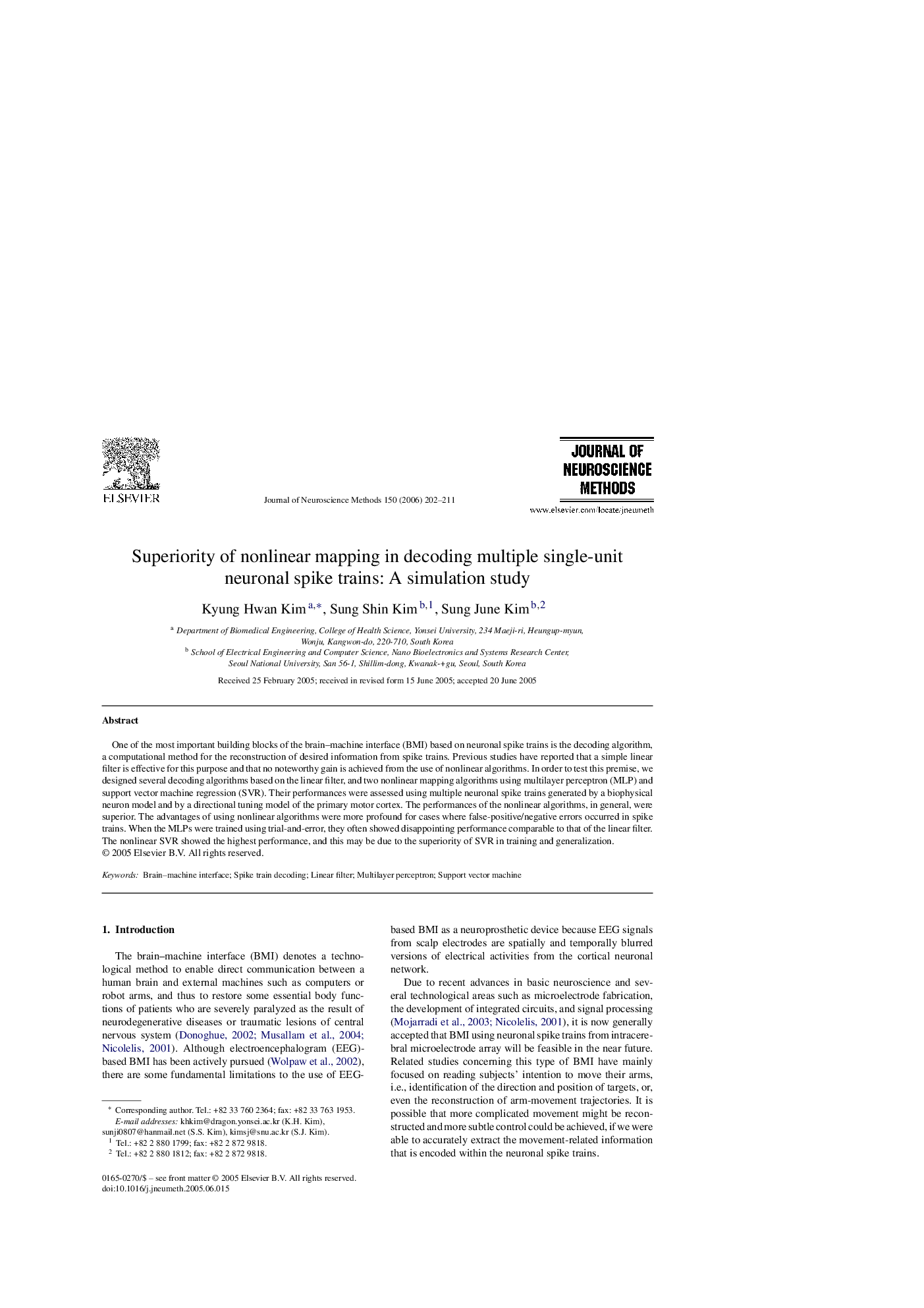| Article ID | Journal | Published Year | Pages | File Type |
|---|---|---|---|---|
| 4337185 | Journal of Neuroscience Methods | 2006 | 10 Pages |
Abstract
One of the most important building blocks of the brain-machine interface (BMI) based on neuronal spike trains is the decoding algorithm, a computational method for the reconstruction of desired information from spike trains. Previous studies have reported that a simple linear filter is effective for this purpose and that no noteworthy gain is achieved from the use of nonlinear algorithms. In order to test this premise, we designed several decoding algorithms based on the linear filter, and two nonlinear mapping algorithms using multilayer perceptron (MLP) and support vector machine regression (SVR). Their performances were assessed using multiple neuronal spike trains generated by a biophysical neuron model and by a directional tuning model of the primary motor cortex. The performances of the nonlinear algorithms, in general, were superior. The advantages of using nonlinear algorithms were more profound for cases where false-positive/negative errors occurred in spike trains. When the MLPs were trained using trial-and-error, they often showed disappointing performance comparable to that of the linear filter. The nonlinear SVR showed the highest performance, and this may be due to the superiority of SVR in training and generalization.
Related Topics
Life Sciences
Neuroscience
Neuroscience (General)
Authors
Kyung Hwan Kim, Sung Shin Kim, Sung June Kim,
